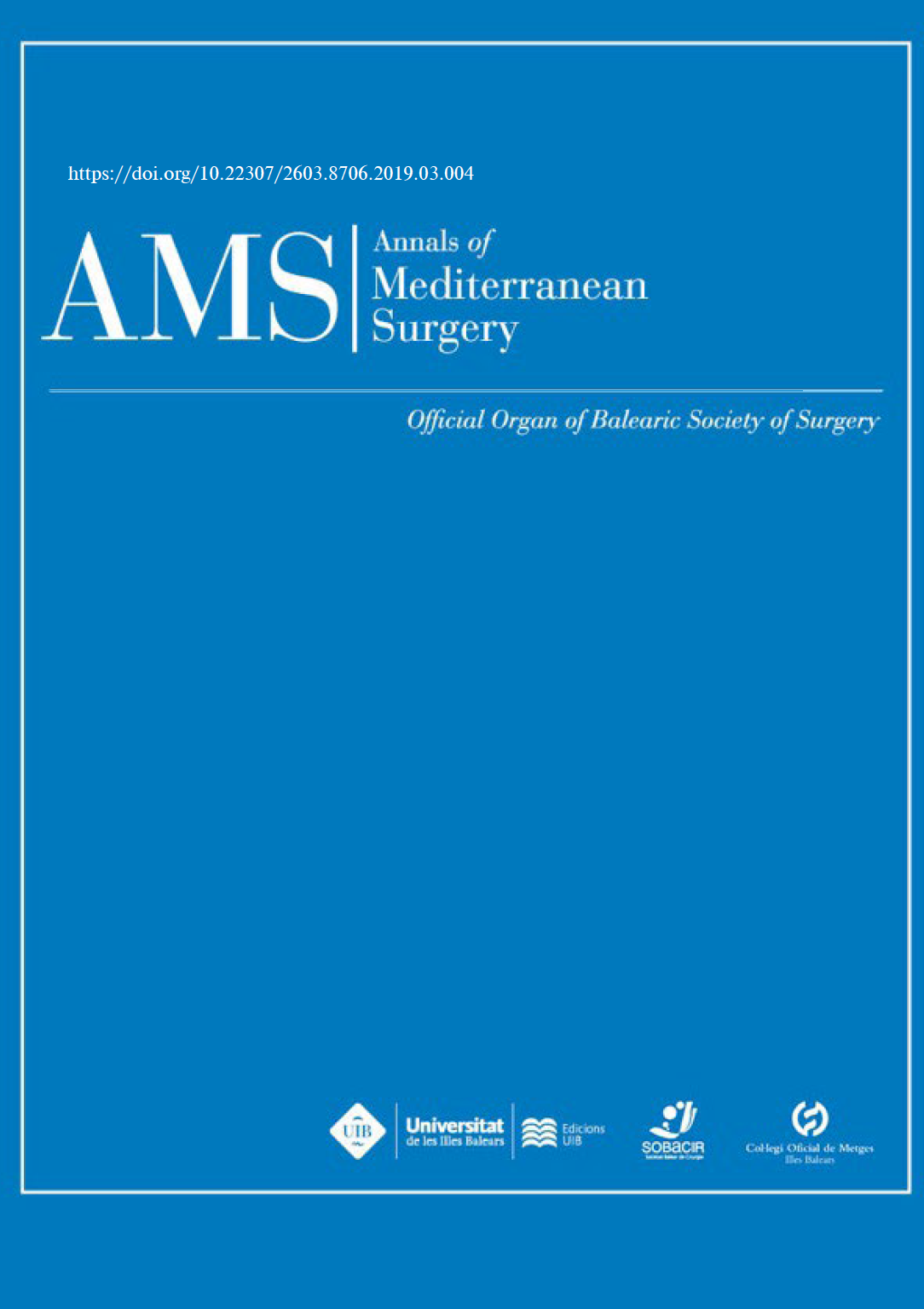RELACIÓN DE NEUTRÓFILO-LINFOCITARIA: UNA HERRAMIENTA DE DIAGNÓSTICO DE CÁNCER TESTICULAR
NEUTROPHIL TO LYMPHOCYTE RATIO: A TESTICULAR CANCER DIAGNOSTIC TOOL
Resumen
Introduction & objective:
Neutrophil to lymphocyte ratio (NLR) has been recently involved in multiple steps of cancer development, including its progression and prognosis. Our primary objective was to evaluate the NLR's potential diagnostic value in testicular cancer. Our secondary objectives were to describe its role in pre-orchiectomy staging and to set an optimal diagnostic cut-off value for our testicular cancer cohort.
Materials & methods:
We retrospectively reviewed 80 testicular cancer patients between January 2005 and December 2015. Age, histopathological features and NLR were recorded. The other 86 men were included in the study as a control group, and their NLR was calculated. Data were analyzed by means comparison, Pearson correlation coefficient, and ROC curve analysis. Sensibility and 1- specificity tables according to the minimum description length principle method was used to identify the optimal NLR cut-off value for testicular cancer diagnosis.
Results:
Testicular cancer patient's mean age was 33.75 (19-51) years and the control group's mean age was 33.15 (20-50) years. NLR was found significantly higher in the testicular cancer group (2.62 ± 1.56 vs. 1.37 ± 0.53; p<0.001). No correlation was observed between NLR and pre-orchiectomy AFP, hCG, and LDH (r-value: 0.08, 0.06 and 0.09, respectively). NLR was higher in patients with a stage ³ I (3.3 ± 1.39 vs. 2.28 ± 1.55; p= 0.014). The best NLR cut-off value for testicular cancer diagnosis was: 2.2 (sensibility: 76%, specificity: 70%, area under the curve: 0.802)
Conclusions:
The NLR could be a useful tool in the testicular cancer diagnosis because it
is higher in the testicular cancer group and patients with higher stages of the disease. The NLR's optimal diagnostic cut-off value for our cohort is 2.2.
Descargas
Descargas
Publicado
Cómo citar
Número
Sección
Licencia
Los autores/as que publiquen en esta revista aceptan las siguientes condiciones:- Los autores/as conservan los derechos de autor y ceden a la revista el derecho de la primera publicación, con el trabajo registrado con la licencia de atribución de Creative Commons, que permite a terceros utilizar lo publicado siempre que mencionen la autoría del trabajo y a la primera publicación en esta revista.
- Los autores/as pueden realizar otros acuerdos contractuales independientes y adicionales para la distribución no exclusiva de la versión del artículo publicado en esta revista (p. ej., incluirlo en un repositorio institucional o publicarlo en un libro) siempre que indiquen claramente que el trabajo se publicó por primera vez en esta revista.
- Se permite y recomienda a los autores/as a publicar su trabajo en Internet (por ejemplo en páginas institucionales o personales) antes y durante el proceso de revisión y publicación, ya que puede conducir a intercambios productivos y a una mayor y más rápida difusión del trabajo publicado (vea The Effect of Open Access).



